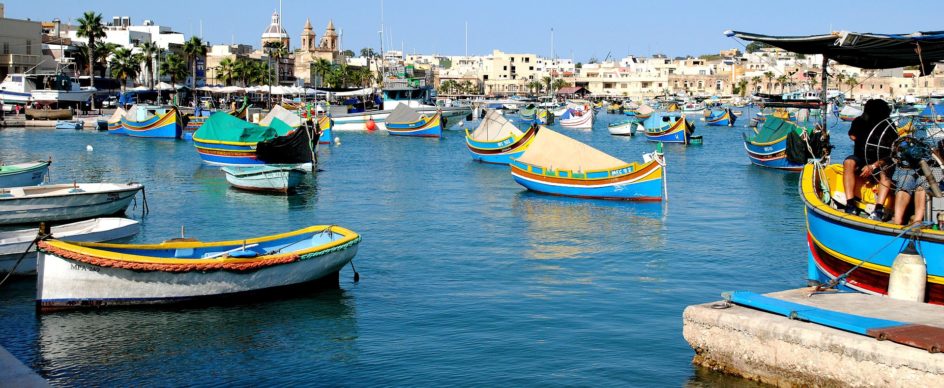
The Colourful Maltese Boats
- Aug 12, 2020
...a cacophony of colourful boats!
If you’ve ever visited one of Malta’s seaside villages, you’ll immediately notice a cacophony of colourful boats, gentling bobbing in the water.
They’re bound to be luzzijiet or dgħajjes tal-pass, two of Malta’s traditional and most beloved fishing boats.
Let’s learn more about the famous luzzu and dgħajsa‘s origins and why they’re Maltese staples.
History of the luzzu & dgħajsa
Etymology is usually a good indication of the origins of a particular tradition.
As a word, luzzu is derived from the Sicilian guzzu and Italian guzzo – which refers to a standard Italian and Sicilian fishing vessel.
In the 1880s, the Italians used to sail to Malta using this particular vessel, and the Maltese luzzu is thought to have been inspired by the Sicilian guzzu. Many historians also see the luzzu as a ferilla (another type of Maltese fishing boat) – guzzu hybrid, as the luzzu seems to have adopted characteristics from both vessels.
In the early 20th century, the luzzu was used as a transport vessel. However, after mass motorisation, the new-and-improved motorised luzzu started being used as a fishing boat.
Nowadays, the art of luzzu building is disappearing at an alarming rate. No new traditional luzzijiet are being built, but a couple of old ones have been or are being renovated. Some of them are still being used as fishing boats, while other luzzu owners have started using their vessels as passenger carriers for tourists.
The luzzu‘s equally vibrant companion, the dgħajsa, is simply a smaller version of the luzzu, with some variations.
Traditionally, the dgħajsa tal-pass is a water taxi that developed in the 17th century. From then onwards, it quickly gained its reputation for being the primary mode of transportation in the Grand Harbour and Marsamxett Harbour.
In fact, during the colonial era of the Knights of Saint John, the increasing population of the Valletta – Three Cities area led to the dgħajsa tal-pass‘s heightened popularity due to higher demand for daily movement between one seaside town and another.
The dgħajsa tal-pass continued to be used until the early 20th century until steam ferries were introduced and immediately replaced the manually operated Maltese vessel. Therefore, the dgħajsa met a similar faith to the luzzu, and is nowadays only used as a passenger vessel for tourists who are willing to experience their own slice of Malta’s maritime history.
The Eye of Osiris
The eye of Osiris is a constant symbol that’s present on the luzzu’s bow. The eye’s popularity in Malta can be traced back to the Phoenicians – and serves as an amulet that protects the fisherman against any evil forces, just like Osiris, the ancient Phoenician god, protected his people against evil outside forces.
The moustache (mustaċċi in Maltese) is another symbol that’s present on nearly every boating vessel. The colour of the moustache historically indicated the fishing village where the boat was based.
The superstitious element extends to the vessel’s colours. When a luzzu is passed down through generations, the colours of the specific vessel are kept exactly the same. According to superstitious belief, changing the colours would result in bad luck out at sea.
Where can one find the Maltese luzzu?
The Maltese archipelago’s small size means that you’re never far away from the next Luzzu.
The Southern fishing village of Marsaxlokk is the “poster child” for the luzzu, as tens of luzzijiet dot its waters. However, you can also catch a similar, picturesque scene when visiting Marsaskala, Birzebbugia and Wied iz-Zurrieq – three Southern, seaside villages that are definitely worth a visit.




